The Language of Literature
credit goes to Classzone.com
Unit 5 : The Changing Face of America (1855–1925)
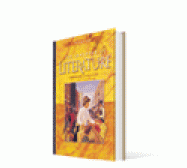
Part 1: Women's Voices, Women's Lives
Emily Dickinson:
This is my letter to the World, 'Hope' is the thing with feathers, Success is counted sweetest, Much Madness is divinest Sense, Letter to T. W. Higginson (April 15, 1862)My life closed twice before its close, After great pain a formal feeling comes, I Heard a Fly buzz—when I died, Because I could not stop for Death
Selected poems and a letter'
Charlotte Perkins Gilman: The Yellow Wallpaper. Who is trapped in the wallpaper?
Barbara Ehrenreich and Deirdre English: from Complaints and Disorders
A look at 19th-century women and their doctors.
Kate Chopin: The Story of an Hour. What a difference an hour makes.
Hisaye Yamamoto: Seventeen Syllables. Conflicts and kisses in a teenage girl's life.
Rita Dove: Adolescence—III. A girl's daydreams of womanhood.
Tillie Olsen: I Stand Here Ironing. Summing up a daughter's life.
Julia Alvarez: Ironing Their Clothes. Loving feelings spread out on an ironing board.
Part 2: The American Dream
Carl Sandburg: "Chicago" Not one of those little soft cities
Edgar Lee Masters:"Lucinda Matlock" - A woman who took what life had to offer
Edwin Arlington Robinson:"Richard Cory" Appearances can be deceiving.
"Miniver Cheevy" He escapes into the legendary past.
Paul Laurence Dunbar:"We Wear the Mask" A mask to hide the hurt
"Sympathy" Understanding the plight of a caged bird
F. Scott Fitzgerald:"Winter Dreams" Can happiness be more than just a dream?
Anzia Yezierska: "America and I" Finding the true America
The Americans:"The New Immigrants" Millions seek a better life in the United States.
Gish Jen: "In the American Society" Smart guys think in advance.
Naomi Shihab Nye: "My Father and the Figtree" A dreamer's imaginings come true.
Yvonne Sapia:"Defining the Grateful Gesture" Plates heaped with food and gratitude
Lorna Dee Cervantes: "Refugee Ship" Orphaned from her Spanish name.
Unit 6 : The Modern Age (1900–1940)
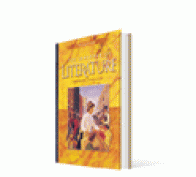
Langston Hughes "I, Too" "Harlem" "The Weary Blues"
Jean-Joseph Rabéarivelo "Flute Players"
Dahleen Glanton from "Love, Langston"
Langston Hughes "When the Negro Was in Vogue" - Meet Harlem's "poet laureate"—a fine translator and a dear cousin.
James Weldon Johnson "My City"
Countee Cullen "Any Human to Another"
Claude McKay "If We Must Die"
Arna Bontemps "A Black Man Talks of Reaping"
Zora Neale Hurston "How It Feels to Be Colored Me"
Alice Walker from "Zora Neale Hurston: A Cautionary Tale and a Partisan View"
James Baldwin "My Dungeon Shook: Letter to My Nephew"
Gwendolyn Brooks "Life for My Child Is Simple" "Primer for Blacks"
Toni Morrison "Thoughts on the African-American Novel"
Summary
Unit 5 Part 1
Emily Dickinson:
-This is my letter to the World
In this short poem, Dickinson tells her feeling about the world. In the poem we can see that Dickinson feel kind of ignore by the world “That never wrote to Me” we can see that she thinks the world ignores her because of her being a women and that the world is judging her.
-Hope is the thing with feathers
In the poem, Dickinson describes the word hope as a bird, she describes it as a singing tune without words that never stops. I think Dickinson imagines ‘Hope’ as a bird because birds a free animals; they can fly where ever they want to, their singing brings happiness to others and you can find them anywhere. Hope is what gives people the energy to continue and birds always have the ability to go free where ever they want.
-Success is counted sweetest
In this poem Dickinson uses the image of a battlefield to describe to us what ‘success’ is. She describes it as a ‘victory’ of the soldiers that die in battlefield to gain the triumph they deserved.
-The madness is divinest Sense
In the poem Dickinson feeling towards madness is anger, she tells us that if someone is Assent, then they are consider as ‘sane’ persons, and if they are Demur, they are consider Dangerous people that are handle with “chains.” I do think that Dickinson was right, when people are idealistic and different, society sees them as a danger because they are innovative, but if people are assent and always agree with what it is told them to do, they are consider “sane” and normal, even today.
-Letter to Thomas Wentworth Higginson
In this letter Dickinson express her feelings toward Wentworth about his critic over her poem. In her letter Dickinson tells Wentworth doesn’t want to follow his advice and tell him that his critic is a “mistake.”
-My life closed twice before its close
In the poem she is talking about death. That she doesn’t know when her time will come and that its is not important to her and that we all know about death is that there is either a “heaven” or a “hell”
-After pain, a formal feeling comes
In the poem she describes the feeling that comes after pain, she describes it as the heart questioning what it feels and the nerves sitting ceremonious. At the end she tells us the “the letting go” comes after the pain.
-I heard a fly buzz when I died
The poem tells us about someone’s death, describing it through their eyes, that while dying all they could see was a fly buzzing around and the stillness of the room and the air, and then “I could not see to see.”
-Because I could not stop Death
The poem tell us about the trip someone had about death, that death came to that person and while leading it to its final destination, “eternity” they passed through the city and saw the people there, doing their business and since when they got to their destiny, that persons feel that centuries are like short days because now that person is in Eternity.
The yellow wallpaper
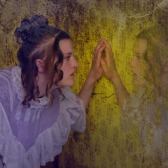
Charlotte Perking Gilman
The yellow wall paper
The story is basically about a woman suffering from “neurasthenia”, her husband told her that resting would do her good and he rent a house where she could rest peacefully. In the room she was put to rest had yellow wallpaper that she detested at the beginning of the story but as time passes by she started to get an interest in the wallpaper because she starts to see eyes and neck. After a while she becomes paranoiac about and thinks that her husband and sister in law are also interested in the mystery of the wallpaper. After many nights of studying the wall paper, she finally sees women creeping behind bars on the wallpaper. She starts hallucinating and when she goes outside she imagines seeing women creeping around and looking at her. When she is about to live the house she decides to peel of the wallpaper, when she finish peeling of all the wallpaper she had already become crazy and thinks that the woman in the wallpaper is now is free.
The story of an Hour
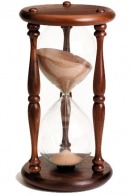
Kate Chopin
The story of an Hour
This short story is about Mrs. Millard. She has a heart problem, bad news has come that her husband has died in a train accident. Her sister Josephine and Richard who is her husband's friend has to break the horrifying news to her as gently as possible. They both were concerned that the news might somehow put her in great danger with her health. Ironically, Mrs. Millard reacts to the news with excitement. Even though the news is heartbreaking she is finally free from the depressing life she was living. She keeps whispering "Free! Body and soul free!". She is happy because she doesn't have to live for anyone but herself now. At the end of the story, Mr. Millard opens the door and he didn’t know about the accident. Richard tried to block Mr. Millard's view of his wife but it was too late. The doctors said she died of a heart disease. The story ends with a short phrase "of joy that kills".
Adolescence III
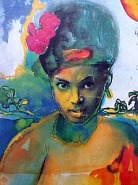
Rita Dove
Adolescence III
This short poem is about and adolescence dreaming about her womanhood. She is alone with her mom after her dad's death, working in the field picking up tomatoes and growing oranges. She dreams about finding her love that would come for her and when he did, she would see her father with tears in his eyes.
I stand here Ironing

Julia Alvarez
I stand here Ironing
This short poem describes the feelings and thoughts this person is having while ironing her family's clothes. Her dad's problems and frustrations, her mother love and her sister's cheerfulness and the things she would do to help them feel better.
